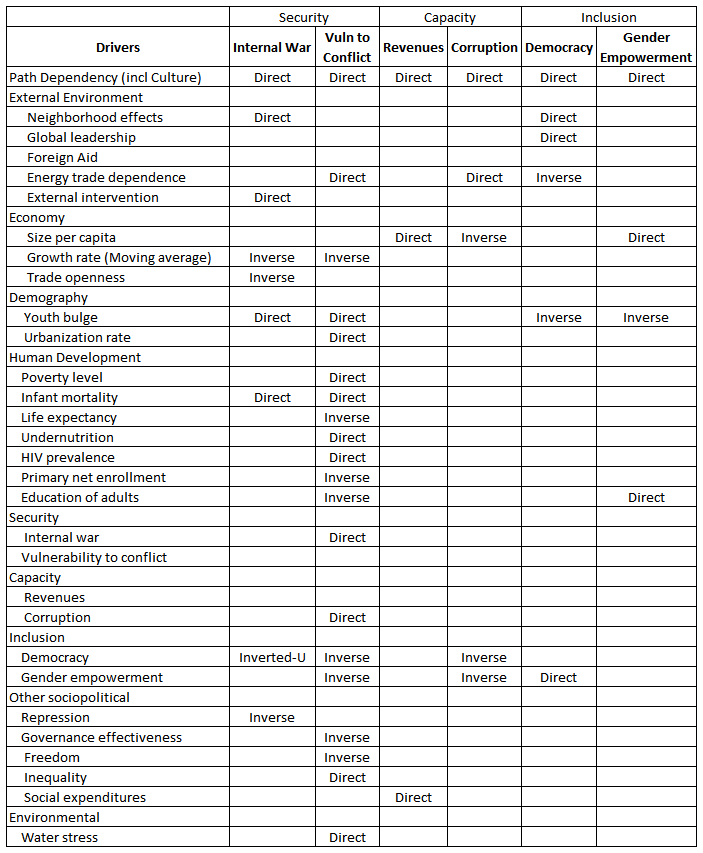International Futures Help System
Dominant Relations: Governance
The drivers of change on each dimension and sub-dimension of governance range widely. A quick summary (see also the table below) is that:
- Probability of intrastate conflict is a function of past conflict, neighborhood effects, economic growth rate (inverse), trade openness (inverse), youth bulge, infant mortality, democracy (inverted-U), state repression (inverse), and external intervention (inverse).
- Vulnerability to intrastate conflict is a function of energy trade dependence, economic growth rate (inverse), urbanization rate, poverty level, infant mortality, undernutrition, HIV prevalence, primary net enrollment (inverse), intrastate conflict probability, corruption, democracy (inverse), governance effectiveness (inverse), freedom (inverse), and water stress.
- Government revenues are a function of past revenue as percentage of GDP, GDP per capita, and fiscal balance (inverse).
- Corruption is a function of past corruption level, GDP per capita (inverse), energy trade dependence, democracy (inverse), gender empowerment (inverse), and probability of intrastate conflict.
- Democracy is a function of past democracy level, economic growth rate (inverse), youth bulge (inverse), and gender empowerment.
- Gender empowerment is a function of past gender empowerment level, GDP per capita, youth bulge (inverse), and primary net enrollment.

There are some general insights with respect to elaboration of the formulations (equations and algorithms) that drive change on each dimension and sub-dimension of governance:
- In almost each case there are path dependencies that supplement the basic relationships—social change has considerable inertia.
- The driving and driven variables clearly constitute a complex syndrome of mutually interdependent developmental interactions, not a simple causal sequence.
- There is a tendency for the dimensions of governance traditionally developing later to feed back to earlier ones, notably for inclusion to affect capacity via reduced corruption and also for inclusion and capacity to reduce the probability of internal conflict.
- Behaviorally, the bi-directional structures suggest the possibility that reinforcing processes may accelerate as governance strengthens, setting up a kind of tipping from one equilibrium to another; vicious cycles of deterioration would also be possible.
For detailed discussion of the model's causal dynamics, see the discussions of flow charts (block diagrams) and equations.
 International Futures at the Pardee Center
International Futures at the Pardee Center